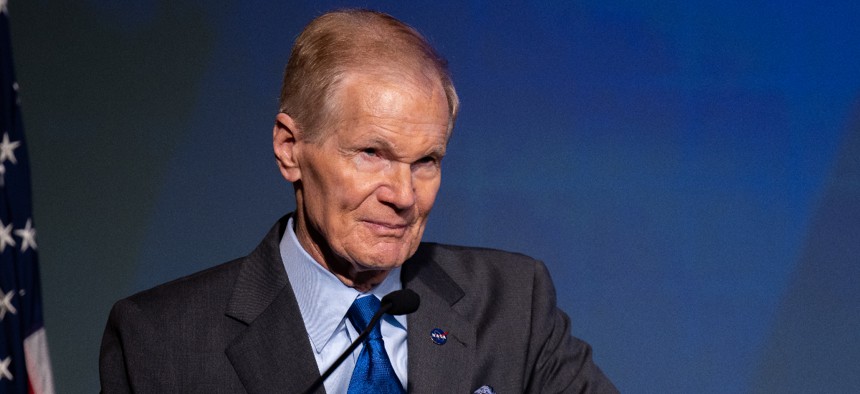NASA Leader Looks to Artemis II and Beyond for Agency’s Future

NASA Administrator Bill Nelson speaks at a news conference on the agency's Sustainable Flight Demonstrator project. Nelson explained the future of his agency’s Artemis missions at a March 29 Axios event. Nathan Posner/Anadolu Agency via Getty Images
NASA Administrator Bill Nelson emphasized that such complex missions “are not going to launch until it’s right” for astronaut safety.
While discussing what’s next for space, NASA Administrator Bill Nelson emphasized the importance of the Artemis programs, during an Axios event on Wednesday.
Nelson noted the agency hopes to have people on Mars by 2040. He also stated that NASA will be making an announcement on Monday about the first crewed Artemis mission, which will have three Americans and one Canadian on it. Artemis II will fly astronauts around the moon and will be the “testing of the human support systems,” Nelson said.
“We’ve already tested the rocket and the spacecraft. That was a 26 day mission last November, and it passed all the tests. It was so good that we added additional tests during the course of the flight. And so now we’re going to put a human crew on it. Check it out. It’ll be the first time that we’ve been back to the moon in a half century. And then, about a year after that, we go into the lunar polar elliptical orbit. And of the four, two will then transfer into the SpaceX lander, land, be a six day mission on the surface, and that will be the first woman and the next man that will walk on the moon.”
That Artemis III lunar landing is projected to occur in 2025.
According to Nelson, before launching anything, it is important to make sure NASA gets it right with astronaut safety.
“Space is hard,” Nelson said. “You also have to wait until you know that it’s as safe as possible because you’re living right on the edge every time we launch in a very unforgiving atmosphere into a very hostile environment. So, I’m not so concerned with the time, as we’re not going to launch until it’s right, and that’s what we did with this last one. It was supposed to go in August.”
After a series of delays caused by fuel leakage and two hurricanes, Artemis I launched Nov. 16.
Nelson reiterated the number of tests that must happen to check a variety of mission components. According to Nelson, an important test is the ability to come back into Earth’s atmosphere, which he deemed “critical” for Artemis I. He added that “the one test that you cannot replicate on Earth is the heat shield coming in on the fiery heat of reentry,” with the returning spacecraft coming in at a speed of Mach 32—or 32 times the speed of sound, the equivalent of approximately 24,000mph—and reaching 5,000 degrees Fahrenheit.
Meanwhile, for unidentified anomalous phenomena, or UAP, Nelson reiterated that NASA is looking for other life forms as part of its mission. He pointed to digging on Mars, where samples will be returned in 2031 to see if they can reveal signs of life. Nelson added that NASA is looking at UAP from a scientific perspective, adding that there are about 18 scientists monitoring NASA’s sensors—including its Earth observing sensors—to determine if they have picked up on anything. They plan to report on this effort sometime this summer.
NEXT STORY: US Needs Improved Regulation to Foster Drone R&D






